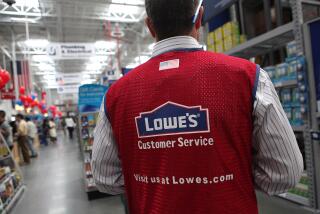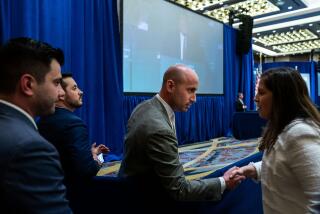Work Force Diversity : An Affinity for E-Mail : Employees Form Electronic Networks to Share Information or Just Socialize
- Share via
Electronic mail is a way of life at Apple Computer Inc.--and not just for managers and marketing directors hustling to keep up with sales forecasts and product introductions.
No, at Apple, e-mail also provides a lifeline for seven groups of employees with a different kind of networking in mind.
These are the so-called affinity groups--such as gays and lesbians, Latinos, Asians, African Americans, women, Vietnamese and devotees of Jewish culture--that use Apple’s AppleLink electronic message system to spread the word about meetings, seminars and community events of interest. In the process, they figure, they strengthen their social ties as well as their presence at Apple.
“This is an example of diversity on the information superhighway,” said Santiago Rodriguez, director of the Cupertino, Calif.-based computer company’s multicultural programs. “This democratizes the process of electronic communication (that) historically only techies or a select group of people had access to.”
Every day throughout corporate America, lightning-fast e-mail messages flash on the screens of thousands of workers. To be sure, many of these shorthand communiques are strictly work-related. But increasingly, employees are using their desktop machines to contact colleagues with whom they share a heritage, philosophy or interest.
Through the wizardry of a computer, a telephone modem and special message software, employees can reach beyond the walls of their immediate work site to branch offices within the organization, or they can contact employees at other companies--vastly expanding the scope and power of their communications.
Being in computer contact often helps promote workplace diversity programs or drum up interest in special causes. Just as often, the goals are far simpler: spreading information and making social contacts.
Among the disparate companies where affinity groups have won acceptance as part of office life are Pacific Gas & Electric, Lotus Development, Levi Strauss and Pacific Bell--where telephone voice mail fills in for computer e-mail as the message medium.
There are no dependable statistics measuring the use of e-mail by affinity groups, but worldwide, e-mail practitioners number at least 45 million. Roughly two-thirds of them have access to networks that reach beyond their immediate circles of colleagues, and that makes e-mail a powerful communication tool.
“E-mail is like a lens,” said Eric Arnum, editor of Electronic Mail & Messaging Systems, a Washington-based newsletter. “You focus news into an affinity group and it gives them something to talk about. If something’s wrong at a company, e-mail is better than (hanging out) at the water cooler or happy hour.”
Digital Queers in the Silicon Valley is considered the e-mail affinity group with the largest membership and, at least so far, the greatest clout. Launched in July, 1992, the professional association draws its 500 members primarily from high-tech companies and law firms with high-tech practices. Its efforts have produced results.
For example, when First Interstate Bancorp recently developed a personnel policy based on federal guidelines that did not specifically prohibit discrimination based on sexual orientation, Digital Queers urged members on the Internet to protest. The campaign was effective, and the Los Angeles-based bank restored the language.
A few years before, electronic discussions at Apple helped shed light on the issue of benefits covering employees’ same-sex partners.
George Kronenberger, the former equal employment opportunity project manager at PG&E; in San Francisco, said e-mail was put to the test at the utility company three years ago. When gay and lesbian employees marched in the city’s Gay Pride parade, the company photographed the group’s truck in front of the Market Street headquarters.
The incident prompted an electronic free-for-all discussion about homosexuality. Some anti-gay employees, Kronenberger said, aimed offensive messages at gay and lesbian colleagues. A few were reprimanded.
The reaction demonstrated a serious downside of electronic communication. “E-mail is becoming our most prevalent workplace hate crime,” said Deborah Johnson-Rolon, a diversity consultant in Santa Cruz.
But good came of the experience, Kronenberger noted. “It increased visibility (of gay and lesbian employees) within the corporation,” he said. “Our issues became the issues of the corporation.”
*
In addition to a gay and lesbian group, PG&E; also has Access, an employee association for people with disabilities that also uses e-mail to communicate with members.
At Levi Strauss, the big San Francisco-based jeans maker, employees formed the Asian/Pacific Islander Employees Assn. to help Asians to share their concerns about career advancement and to make other employees aware of their valuable skills.
*
Affinity groups at Pacific Bell take some credit for improving the workplace environment, in large part because of the strength they have gained through communicating via voice mail.
“We have forced the acknowledgment of diversity and been the catalyst for change to begin,” said Mary Warren, a data applications engineer who belongs to the Gay and Lesbian Employees Assn. Other groups are for blacks, Asians, women and disabled employees. Representatives from all of them make up the company’s diversity council.
“They realize that by allowing it, they’re showing they’re a gay-friendly organization,” Warren said. “That’s important in the competitive arena.”







